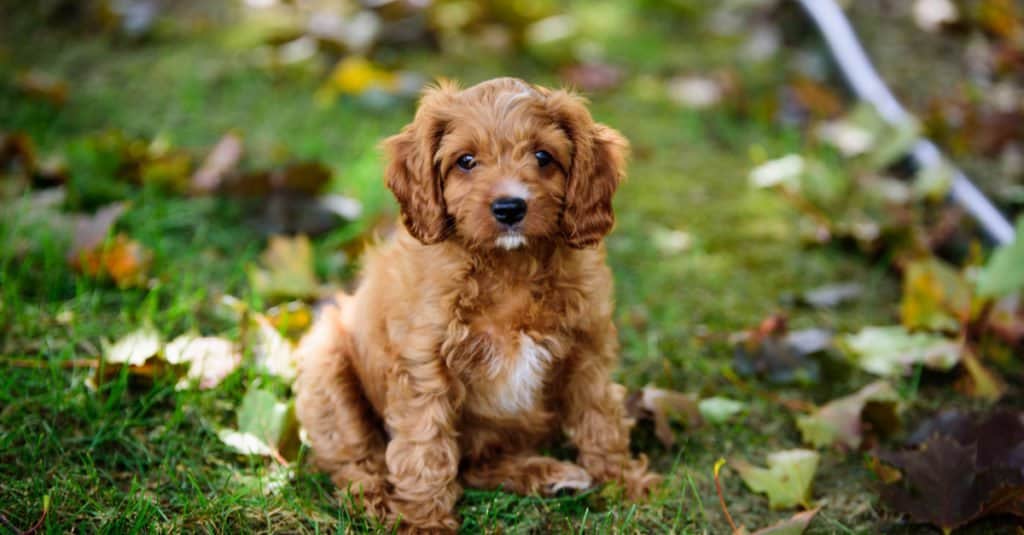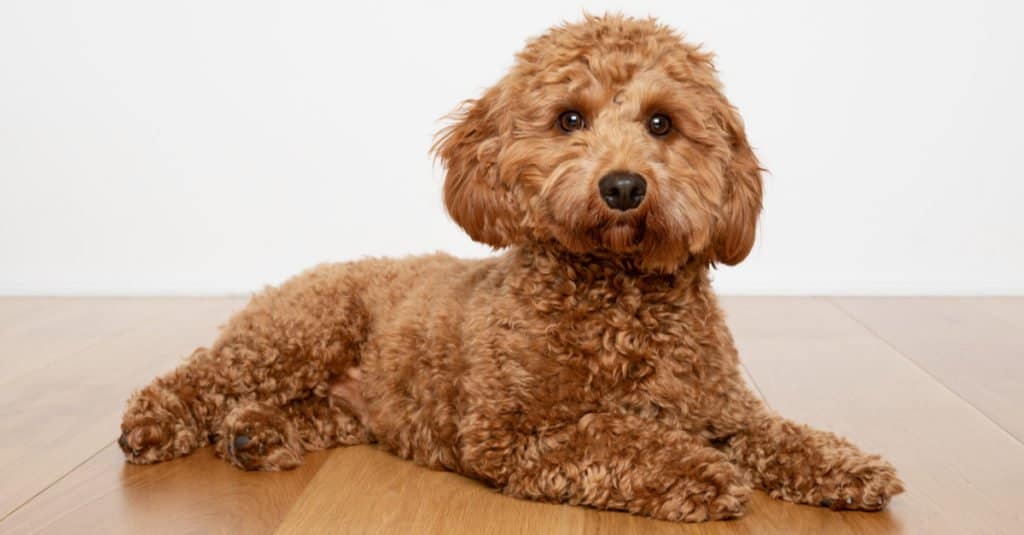Cavapoos are delightful designer dogs from Australia with an affectionate, affable temperament. In the 1990s, breeders crossed poodles with Cavalier King Charles spaniels to create these adorable little dogs. They make loving companions suitable for smaller living spaces, but what many people want to know is what to expect from their coats. Do Cavapoos shed? Are they hypoallergenic? Read on to find out all about the coat of this distinct breed!
Do Cavapoos Shed?

All Cavapoos shed, but the degree varies according to which parent they take after.
©AMB-MD Photography/Shutterstock.com
All Cavapoos shed, but the degree to which they do so varies according to which parent they take after. By the same token, some Cavapoos are hypoallergenic while others are not.
What makes a Cavapoo hypoallergenic? Although no dog is completely hypoallergenic, some qualify more than others. All dogs produce allergens as part of their skin, saliva, and urine. The worst pet allergen is dander (flakes of dead skin). When a dog sheds, it releases dander into the air along with strands of hair or fur. The more a dog sheds, the more dander it releases. So Cavapoos that shed more are less likely to be hypoallergenic.
How Much Do Cavapoos Shed?
Cavapoos are generally low to moderate shedders. How much they shed depends on which parent’s genes are dominant. Poodles shed very minimally while Cavalier King Charles spaniels shed moderately. You can guess which parent has the most influence on a Cavapoo puppy by its coat type. See the next section for the three different Cavapoo coat types.
Some Cavapoos who take after their Cavalier King Charles Spaniel parents “blow their coats” once or twice a year. This period of massive shedding rids the dog of its undercoat in response to changes in temperature and daylight. Coat blowing usually lasts two to four weeks in the spring and fall. Once the old undercoat is gone, a new one grows, more appropriate for the upcoming season (thicker in winter and thinner in summer).
Do Cavapoos Have Hair or Fur?

Cavapoos may have either hair or fur, depending on their genetic makeup.
©bonandbon/Shutterstock.com
Cavapoos may have either hair or fur, depending on their genetic makeup. Their coats come in three different types: hair, wool, and fleece. All three are fairly short. These coat types behave differently and require varying levels of care, so be sure you know which type your dog has before committing to bringing them home.
Most Cavapoos are double-coated, which means they have a soft, insulating undercoat (ground hair) and a protective, coarse outer coat (guard hair). In this regard, they take after the Cavalier King Charles spaniel, not the poodle. The undercoat is responsible for most shedding, so Cavapoos with a thicker undercoat will typically shed more.
Hair
Cavapoos whose poodle genes are dominant usually have hair. This is the simplest coat type to care for. It’s also the one that sheds the least. The hair is moderately curly with a wiry, coarse texture. If you want a low-maintenance Cavapoo with minimal shedding, this is the type to go for.
Wool
Cavapoos with predominantly poodle genes may also sport the wool coat type. Breeders call this the “wool” coat because it closely resembles sheep wool in appearance and texture. This coat type is very similar to the hair coat in terms of shedding, but it tends to be much more tightly curled. Because of this, it requires more grooming and gives the dog a “teddy bear” look. Allergy sufferers are likelier to tolerate hair and wool coats than fleece coats.
Fleece
The third and final Cavapoo coat type is the fleece coat. This is the most distinctive Cavapoo coat. Unlike the other two types, it tends to be wavy and loose instead of tight and curly. It requires more grooming and may benefit from regular trips to a professional groomer. Shedding levels are higher with this coat type, which means it may cause a reaction in allergy sufferers.
Grooming a Cavapoo

Depending on its coat type, you should brush your Cavapoo at least two to four times a week.
©David Calvert/Shutterstock.com
Depending on its coat type, you should brush your Cavapoo at least two to four times a week. Their coats tend to tangle, especially the fleece type. The best brush for a Cavapoo is a slicker brush, which is a kind of pin brush useful for detangling thick coats. If you wish, you can follow up with a steel comb to ensure you’ve removed every tangle. A de-shedding tool may be useful for Cavapoos whose spaniel genes are predominant.
You should only need to bathe your Cavapoo every four to six weeks, though you can bathe them as often as every two weeks if they get dirty. Don’t overdo it, though, as this strips the skin of its natural oils. This causes dry, itchy skin and a lifeless coat.
Most groomers recommend you seek professional grooming for your Cavapoo every four to six weeks. They can advise you on the best cut for your Cavapoo, including the teddy bear cut, the puppy cut, or a simple trim. As with any double-coated dog, it’s best not to shave your Cavapoo down to the skin. They rely on their coat to regulate their body temperature.
How to Reduce Shedding
Though most Cavapoos shed very little, you may still be looking for ways to cut down on the hair around the house. Below are a few tips to help you get your dog’s shedding under control.
- Brushing: It’s absolutely essential to brush your Cavapoo on a regular basis. This will keep its coat healthy and remove loose hairs before they can land on the floor or get into the air. This may even help reduce allergens.
- De-shedding brush: Cavapoos who take after their spaniel parent may benefit from a special de-shedding brush. Check out this review article for the best de-shedding brushes for dogs.
- De-shedding shampoo: For heavier shedders, a de-shedding shampoo may be the answer. Take a look at this review article on the best de-shedding shampoos for dogs.
- A healthy diet: Don’t underestimate the power of a balanced diet! These dog foods for shedders may help reduce the amount of hair around the house.
Conclusion
Cavapoos make excellent family pets, but be sure you understand which coat type you’re inheriting before you bring your new friend home. It’s important to remember that not all Cavapoos are hypoallergenic. There’s a level of unpredictability when it comes to the characteristics of mixed breeds, so spend some time with a prospective new pet to make sure it won’t trigger allergies.
Up Next:
The photo featured at the top of this post is © Kelly Foreman/Shutterstock.com
Ready to discover the top 10 cutest dog breeds in the entire world?
How about the fastest dogs, the largest dogs and those that are -- quite frankly -- just the kindest dogs on the planet? Each day, AZ Animals sends out lists just like this to our thousands of email subscribers. And the best part? It's FREE. Join today by entering your email below.
Thank you for reading! Have some feedback for us? Contact the AZ Animals editorial team.






